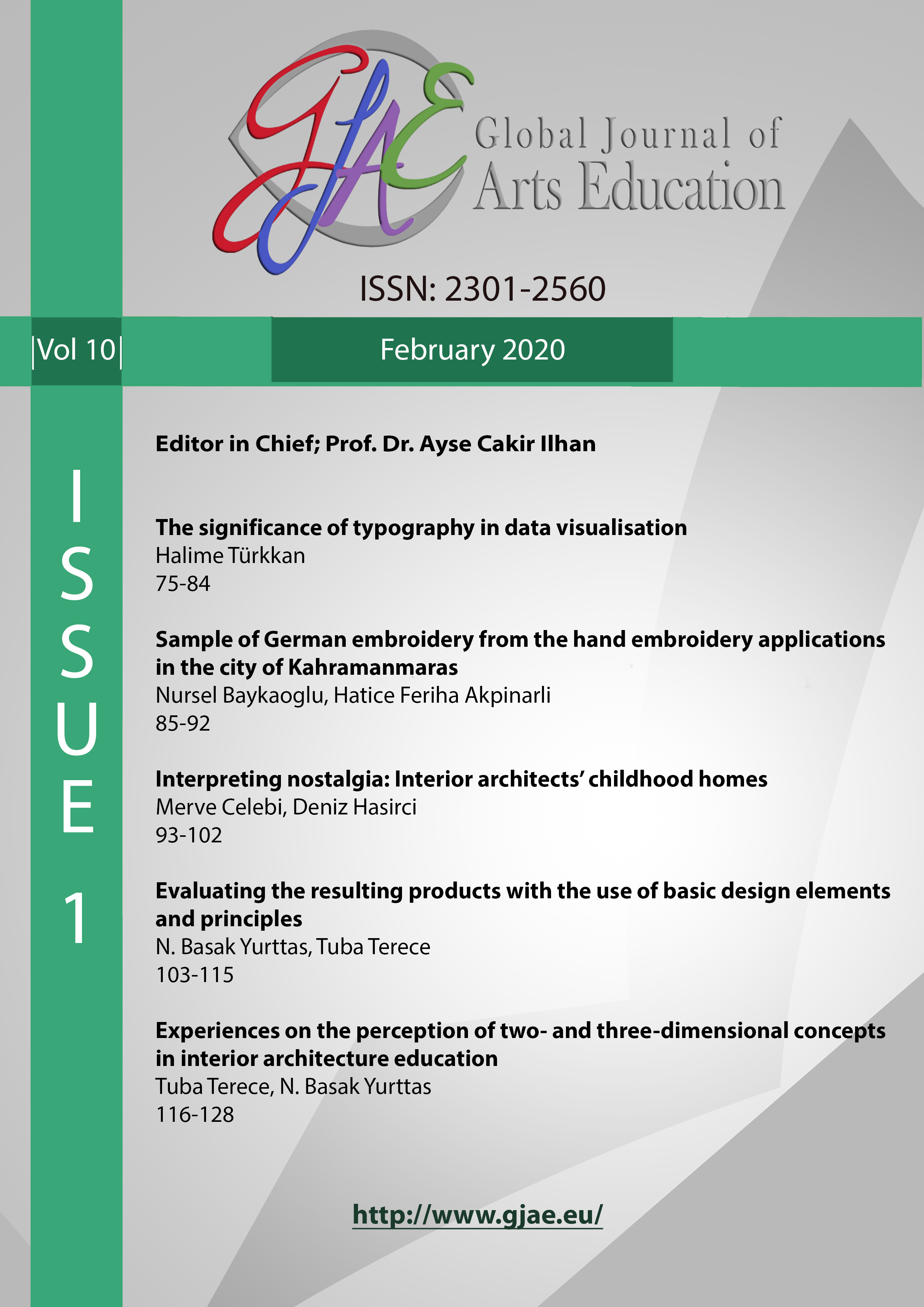Experiences on the perception of two- and three-dimensional concepts in interior architecture education
Main Article Content
Abstract
In the study, at the Department of Interior Architecture and Environmental Design, Biruni University, in the 2019–2020 academic Fall Semester 1, in the scope of “introduction to Project 1†course, the applications of the students in the semester are discussed. During the implementation process, each student created original three-dimensional works based on the original works of Piet Mondrian. They have converted two-dimensional paintings into three-dimensional works with utility elements such as cubes, rectangular prisms and bars, with model materials to be used in their chosen areas. In the last stage, they drew the top, front-back and right-left side facades of the three-dimensional works. As a result, the students experienced a process in which they gained self-confidence, were not afraid to experiment and achieved successful results without being within certain limits with their original design approaches in their first studio experience. It was seen that they grasped the importance of learning by seeing, creating alternative solutions with trial and error method, expressing visually and experiencing in studio work. They have obtained a useful studio experience in which they can draw, transfer what they see and develop their manual skills with the concepts of ratio, proportion, scale and perception with the studies done.
Keywords: Project, design, studio space, experience, three-dimensional perception.
Downloads
Article Details

This work is licensed under a Creative Commons Attribution 4.0 International License.
Authors who publish with this journal agree to the following terms:
- Authors retain copyright and grant the journal right of first publication with the work simultaneously licensed under a Creative Commons Attribution License that allows others to share the work with an acknowledgement of the work's authorship and initial publication in this journal.
- Authors are able to enter into separate, additional contractual arrangements for the non-exclusive distribution of the journal's published version of the work (e.g., post it to an institutional repository or publish it in a book), with an acknowledgement of its initial publication in this journal.
- Authors are permitted and encouraged to post their work online (e.g., in institutional repositories or on their website) prior to and during the submission process, as it can lead to productive exchanges, as well as earlier and greater citation of published work (See The Effect of Open Access).

